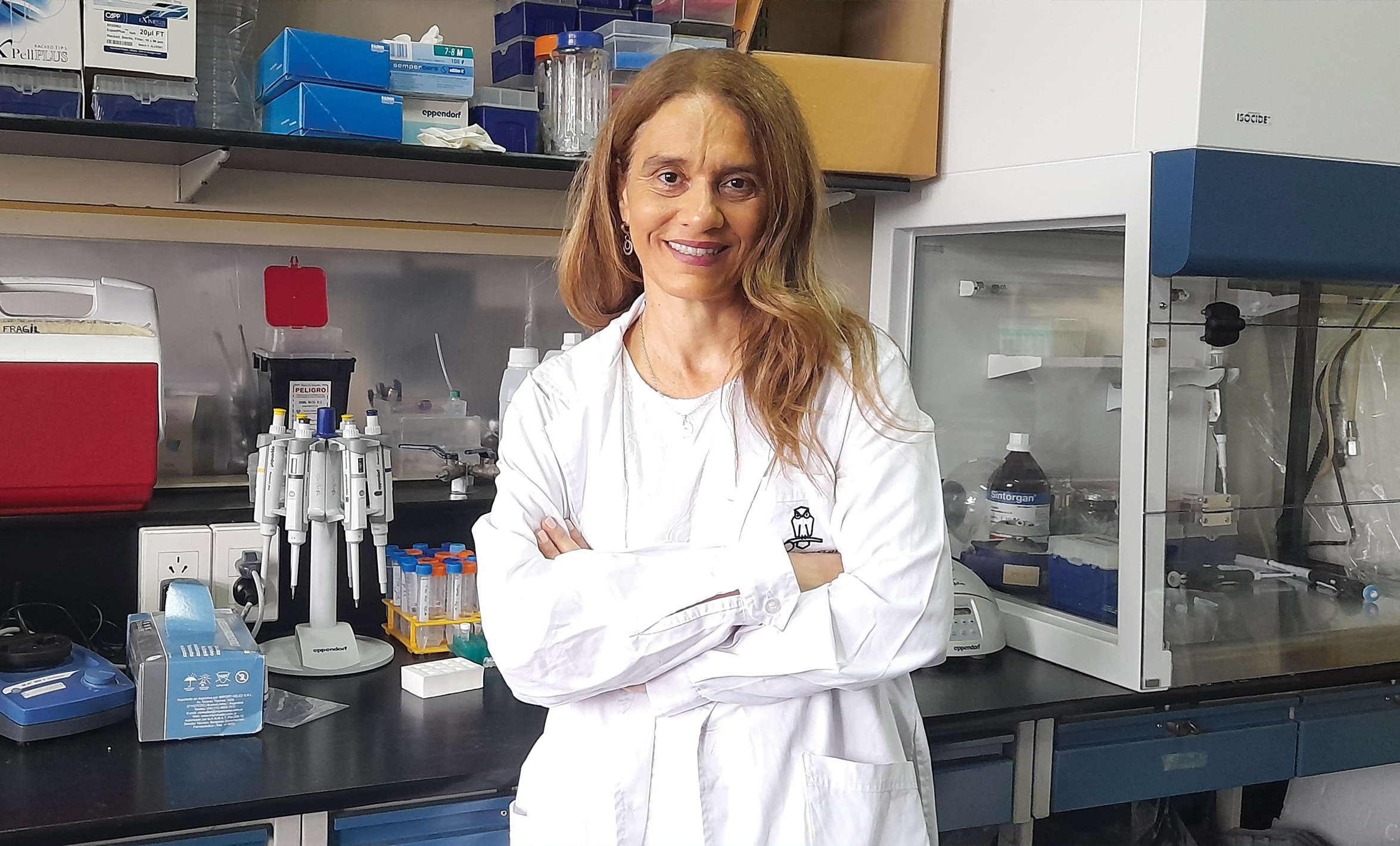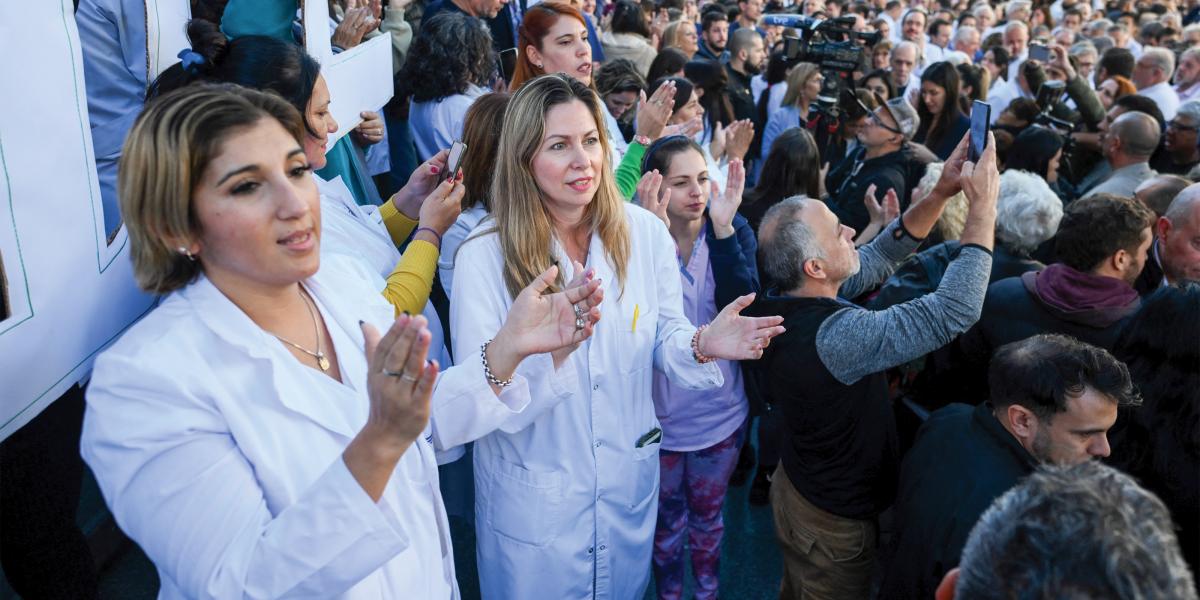Disrupted but Determined: Lessons From Argentine Scientists
Funding cuts and sky-high inflation have made researchers in Argentina thrifty and creative. What can U.S. colleagues learn from them?
Three more months.
That’s how long Andrea Llera thinks her project on the genetics of breast cancer in Northern Argentina can last if she doesn’t receive the government funding she was awarded.
After that, the researcher at Argentina’s National Scientific and Technical Research Council (CONICET) will no longer be able to sample and analyze tumor tissue or collect clinical and epidemiological data. The project will come to a halt, and Llera won’t have enough new data to pursue her research on whether women of Indigenous ancestry are more prone to aggressive subtypes of breast cancer compared to those of European descent, or to understand the biology of those tumors.
In August 2023, Llera’s project—along with 22 others—was selected for the highly competitive funding program called “High Impact Federal Network Projects.” The $1 million grant, distributed in four installments over four years, was unusually large by Argentine standards. Soon after they were notified, all 23 projects received the first payment and were launched.
But since libertarian President Javier Milei took office in December 2023, they have received no subsequent payments. The administration intends for all 23 projects to continue, and an administrative process is currently underway to issue the second payment, according to a spokesperson for the Secretariat of Science, Innovation, and Technology. But there is no set date for when the next payment can be expected.
After enduring decades of cyclical crises, extreme currency fluctuations, and sky-high inflation, Argentine scientists like Llera are used to making do with limited funds. In other words, they are used to navigating many of the challenges that U.S. scientists are now facing.
They know how to bargain with suppliers, recycle materials, and look for cheaper alternatives when the equipment they want is too expensive. But even those skills are becoming insufficient after a year and a half of aggressive government cuts to public spending.
“This is the worst crisis I’ve seen,” says Llera.

‘Significant Strain’
Marcelo Martí, also a CONICET researcher and director of a High Impact project, has kept his work afloat by narrowing its scope. His team used the first installment to collect and analyze samples from more than 800 patients to study rare diseases in Argentina, such as cystic fibrosis, spinal cord atrophy, and phenylketonuria. But this year, with no funding, they haven’t enrolled a single patient. Plans for future phases—like building the country’s most comprehensive database on the genetics of rare diseases—are on hold.
“We work with patients who don’t have the resources to get these kinds of studies done in the private health care system,” Martí says. “If we don’t conduct these studies, no one will.”
Anabella Srebrow, the director of another of the High Impact projects, points out that as a result of Argentina’s currency fluctuations and high inflation (cumulative inflation since September 2023 has reached 308%), the longer they have to wait for the disbursement, the less purchasing power it will have.
Srebrow’s project leverages local expertise in RNA biology to design therapeutic strategies for a range of conditions, from noncommunicable diseases like Alzheimer’s and skin disorders to viral infections like dengue. “Having a well-trained scientific community in this field allows us, as a country, to be better prepared to face new and future epidemics or pandemics. We have made significant progress, but our ability to conduct large-scale experiments has declined considerably,” she says. “We will continue working until we run out of reagents and other supplies, a situation that is causing significant strain."
Now, Argentine scientists are also suffering from a new layer of uncertainty because of U.S. funding cuts. With local funding paralyzed, international collaborations were the only remaining option for Argentine scientists.
Martí, for example, is part of a collaboration with researchers at the University of Miami to study genetic mutations associated with hearing loss, partly funded by the NIH. While they haven’t received direct indications that the funding will halt, they are concerned, and science budget reductions have become a regular topic of conversation with colleagues based in the U.S.
‘There’s Nothing We Can Do’
Some of Argentine scientists’ experience may have increasing relevancy for the U.S. peers. For example, Argentine scientists are used to seeing their colleagues emigrate when funding gets scarce. The possibility of a massive “brain drain” is already raising alarms in the U.S.
Similarly, in both Argentina and the U.S., scientists have responded to funding cuts with public demonstrations (though they aren’t particularly effective because people in Buenos Aires are accustomed to seeing protests on a daily basis).
But trends in public support differ between the two countries. Although Milei’s criticisms of the value and productivity of scientific work resonate with a large part of his base, a March public opinion survey by Universidad de San Andrés shows that scientists remain the most highly respected group in Argentina—ranking above small business owners and artists. Only 7% of respondents said they have a “bad or somewhat bad opinion” of scientists. In contrast, a November 2024 Pew Research survey in the U.S. found that 23% of people have “no or not too much” confidence in scientists.
While Argentine scientists’ resourcefulness in the face of scarce research funding may be inspirational to their U.S. counterparts, it also might be close to reaching its limits. “It’s not a matter of accessing large or small subsidies anymore,” Martí says. “If they don’t get paid, then there’s nothing we can do. I knew that it was going to be bad, but I didn’t expect it to get this bad, this fast.”
